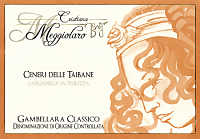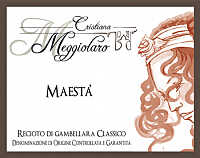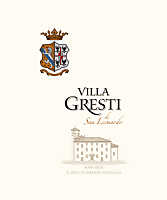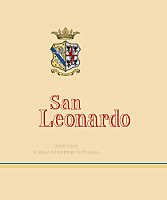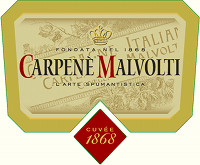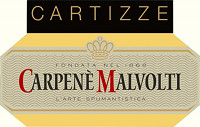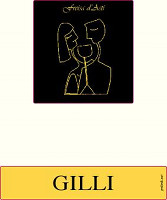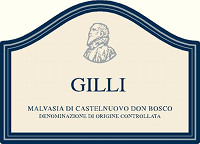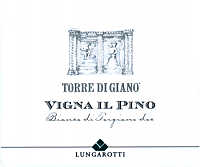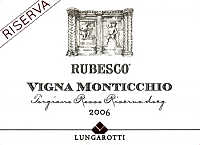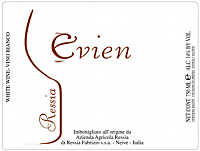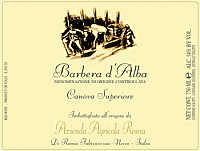|
Carbon dioxide is an element playing many roles in wine making. This gas,
colorless and odorless, can be in fact considered the substance which made
literally “dream” all wine lovers - since the half of 1600s - by giving
moments of class, luxury and pleasure. The success of Champagne is in fact
associated, besides its quality, to the charm given by bubbles that, from the
bottom of the glass, joyously dance upwards to the surface, an effect produced
by carbon dioxide. The magic of carbon dioxide is not only seen in the
glass, by means of bubbles and foam, but it is also perceived in the mouth by
means of effervescence with its typical “stinging” sensation. Also this
tactile stimulus, lively and joyous, has certainly contributed to the success of
Champagne and most of sparkling wines.
Carbon dioxide however has a strong association with wine, also in those having
no effervescence in the glass, as this gas is produced during alcoholic
fermentation and, when provided by the wine making procedures, during the so
called malolactic fermentation. This latter one cannot be in fact defined
“fermentation”, indeed it should be defined as malolactic degradation
or conversion, as it is not a “fermentation” in the proper sense of the
word, indeed it is the degradation of malic acid into lactic acid and carbon
dioxide. Malolactic degradation, it should be noticed, it is not done by yeast -
something happening in alcoholic or primary fermentation - it is conducted by
lactic bacteria. Carbon dioxide produced by alcoholic fermentation and malolactic
degradation is generally lost; for this reason, in the production of regular
table wines cannot be detected a relevant quantity of this gas in order to
produce the effect of effervescence.
The dispersion of carbon dioxide is favored by common wine making practices, as
the fermentation is generally done in non hermetic containers, therefore
allowing carbon dioxide to be released in the air. Carbon dioxide produced
during fermentation, we will discuss about this later, can be appropriately
preserved in order to give the wine effervescence, such as in case of slightly
sparkling or sparkling wines. Carbon dioxide - which is also used for the
production of mineral water and soda drinks - can be artificially added to the
wine at the end of production. This practice is generally used in some
“slightly sparkling wines” served in some restaurant and brought to the table
in jugs, as well as used for certain bottled wines. It should be said the
quality of carbon dioxide solubilization greatly changes according to the
technique used in the process, a factor greatly affecting the organoleptic
effect produced by this gas.
In quality wine making, solubilization of carbon dioxide in wines is generally
obtained with two main methods: by refermenting a wine in bottle or by
fermenting or refermenting in a closed tank, that is a hermetically sealed
container. In both cases, the goal is the same: to avoid the dispersion of
carbon dioxide in order to solubilize the gas in the wine therefore producing
the characteristic effervescence. The refermentation in bottle is the base of
méthode champenoise - the famous method used for the production of
Champagne - as well as of classic method, Franciacorta method,
Benedictine method and cava method. Another method based on the
refermentation in bottle, lesser known of the above ones but still used for the
production of certain French wines, such as Gaillac e Limoux, is the
méthode rurale, also known as méthode artisanale, méthode
ancestrale or méthode gaillacois.
|
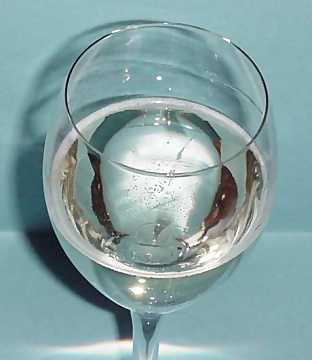 | |
| The bubbles in sparkling wines develop
thanks to the presence of carbon dioxide | |
|
The fermentation or refermentation in closed tanks is a technique making use of
a perfectly sealed and airtight container. This method is known as
Martinotti method or Charmat method, named after the two
technicians who invented and improved this method. The fermentation in closed
tank was in fact invented by Federico Martinotti in 1895 at the Istituto
Sperimentale per l'Enologia di Asti (Experimental Institute of Enology of Asti)
and then perfected in 1910 by Eugène Charmat. The method is mainly known
today as Charmat method - unjustly denying the role of Federico
Martinotti - and, less common, Charmat-Martinotti method or Italian
method. The production of a sparkling wine by means of Charmat method
has an average duration from three to six months. Italian wine maker Nereo
Cavazzani, at the end of 1970s, perfected this method and invented a
procedure in which the duration was from six to twelve months, while favoring
the aging of wine in the tank.
The two methods are today known as short Charmat method - or simply
Charmat method, in case the production has a duration from three to six
months; long Charmat method or Cavazzani method, in case the
duration is from six to twelve months. It should be noticed the method invented
by Nereo Cavazzani provides for some agitators inside the tank, which,
periodically, put the fermentation sediments in suspension, therefore giving the
wine a fuller body and a better sensorial complexity. The goal of all methods is
to obtain a wine in which is present carbon dioxide - that is an effervescent
wine - however it should be noticed the quality of the result is significantly
different according to the method. The classic method produces a high quality
solubilization of carbon dioxide, with tiny and very fine bubbles, almost
creamy. On the other hand, it is the most expensive method, as its duration can
also be many years long. The method producing the lower quality, as well as the
most simple and cheap one, is the artificial addition of carbon dioxide to the
wine, with the result of obtaining gross bubbles and, most of the times, a
pretty aggressive and coarse effervescence.
Carbon dioxide is not only useful for the production of effervescence. During
alcoholic fermentation it is very effective for the keeping of wine. Thanks to
the heavier weight than oxygen, carbon oxide forms an effective layer above the
surface of wine, while literally pushing the oxygen out of the container
therefore avoiding oxidation. The protective effect of carbon dioxide also
occurs in the production of sparkling wines, both the ones produced with the
classic method, that is refermented in bottle, as well as those produced with
the Charmat-Martinotti method. During the refermentation, the production of
carbon dioxide, besides producing pressure and to solubilize in wine, plays an
excellent role in keeping, while avoiding the contact with the oxygen and
therefore oxidation. Wines refermented in bottle can in fact virtually be kept
for many tens of years, thanks to the presence of carbon dioxide. The decay of
wine will occur at the moment of disgorgement, when the bottle will be
opened in order to eliminate sediments, an operation which will allow oxygen to
enter the bottle.
It will be that small quantity of oxygen to start the aging of the sparkling
wine in bottle and, at the same time, its unavoidable decay in the course of the
years. According to a technical point of view, the production of sparkling wines
with the classic method, besides being the method to ensure the highest quality
in this style of wines, it is also the one which can ensure a longer keeping of
the product. Like already said, up to the moment of disgorgement, the content of
the bottle produced with the classic method can be kept for a virtually
indeterminate period of time. The keeping effect of carbon dioxide, by
isolating the wine from oxygen, in fact allows producers of this style of wine
to periodically release on the market very old vintages, even tens of years old.
To make things clear, it should be said they are wines disgorged few months
before commercialization, after having allowed them to “rest” and “develop”
in the bottle for many years. The result is expressed in the glass with
organoleptic qualities of incredible complexity while keeping a remarkable
crispness.
According to the law, effervescent wines belong to specific categories based on
the internal pressure of the bottle and produced by carbon dioxide. A wine is
defined “sparkling” in case the internal pressure, measured at the temperature
of 20 °C, is not lower than 3.5 bar; wines with a pressure from 1 and 2.5 bar
are defined “slightly sparkling”. According to a technical point of view, the
production of 1 bar per liter inside the bottle, requires the fermentation of
4.3 grams of sugar, of which, part will be converted into alcohol by yeast and
part into carbon dioxide. By considering the typical pressure in a bottle of
classic method sparkling wine, generally equal of 6 bar, in order to obtain this
pressure, to the base wine must be added about 25 grams of sugar per liter. As
it is commonly known, this quantity of sugar is added together with yeast to the
base wine - a dry wine and completely vinified - in order to start the second
fermentation.
From a sensorial point of view, carbon dioxide produces the same effects no
matter the method used for its solubilization in the wine. The only appreciable
differences - also in a significant way - are mainly about tactile sensations,
whereas the gustatory effect, and the interaction with other stimuli, is the
same. The first impression which can be perceived from carbon dioxide at the
moment it enters the mouth, is represented by the characteristic effervescence,
a tactile sensation producing the typical “stinging” stimulus. The intensity
and delicacy of this stimulus greatly changes according to the production method
and, in particular, the size of “bubbles” and how the gas was solubilized in
the wine. The artificial process of adding carbon dioxide produces a pretty
violent and intense effervescence, with coarse bubbles, which can also become
violent in the mouth, most of the times irritating or even painful.
A quite different sensation is the one perceived in classic method sparkling
wines. In these wines, in fact, the size of bubbles is remarkable lesser,
however producing an effective sensation of effervescence, as well as less
aggressive in the mouth and, in case of excellence, they give the wine an
elegant creamy touch. As for taste, carbon dioxide has a basically acid
taste, a stimulus which is generally perceivable, in case it is dissolved in
water, at concentrations higher than 200mg/l, whereas the threshold is of
500mg/l in case of wine. Its basically acid taste is added, of course, to the
sensation of acidity produced in the wine by all the other acid substances,
therefore accentuating the crispness of wine. From a gustatory point of view,
carbon dioxide favors the accentuation of the so called “hard” sensations
found in wine, therefore the intensity of astringency and acidity is increased
when this gas is dissolved in the wine.
On the other hand, carbon dioxide attenuates the stimuli produced by the so
called “round” substances, such as sweetness, roundness and alcoholicity. An
effervescent wine, just like any drink to which is added carbon dioxide, is
perceived, as a matter of fact, less sweet and less alcoholic than it really is.
In case carbon dioxide is allowed to completely disperse from wine, by swirling
the glass, it will be perceived a stronger sensation of sweetness as well as the
burning effects of alcohol, while accentuating roundness. The accentuation of
astringency, in particular, justifies the scarce availability of sparkling wines
produced with red berried grapes, as this could produce an excessively
unbalanced and astringent wine. Carbon dioxide, therefore, plays a fundamental
role in the gustatory balance of wine. Finally, the effect of this gas also
affects the olfactory phase of tasting. When carbon dioxide raises from the
surface of the wine, it transports aromatic substances upwards, therefore
facilitating, although marginally, the perception of aromas.
|


